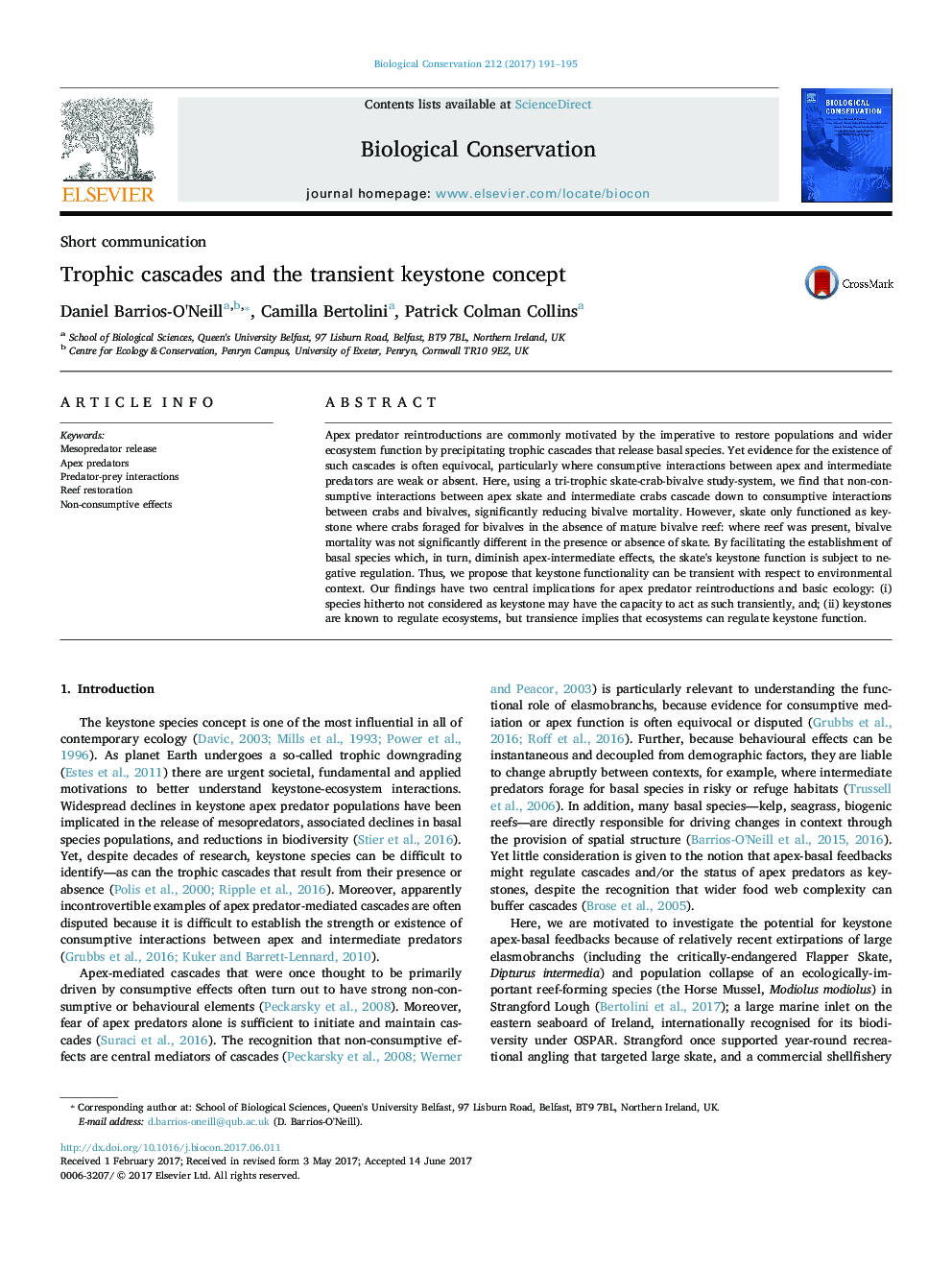| Article ID | Journal | Published Year | Pages | File Type |
|---|---|---|---|---|
| 5743121 | Biological Conservation | 2017 | 5 Pages |
Abstract
Apex predator reintroductions are commonly motivated by the imperative to restore populations and wider ecosystem function by precipitating trophic cascades that release basal species. Yet evidence for the existence of such cascades is often equivocal, particularly where consumptive interactions between apex and intermediate predators are weak or absent. Here, using a tri-trophic skate-crab-bivalve study-system, we find that non-consumptive interactions between apex skate and intermediate crabs cascade down to consumptive interactions between crabs and bivalves, significantly reducing bivalve mortality. However, skate only functioned as keystone where crabs foraged for bivalves in the absence of mature bivalve reef: where reef was present, bivalve mortality was not significantly different in the presence or absence of skate. By facilitating the establishment of basal species which, in turn, diminish apex-intermediate effects, the skate's keystone function is subject to negative regulation. Thus, we propose that keystone functionality can be transient with respect to environmental context. Our findings have two central implications for apex predator reintroductions and basic ecology: (i) species hitherto not considered as keystone may have the capacity to act as such transiently, and; (ii) keystones are known to regulate ecosystems, but transience implies that ecosystems can regulate keystone function.
Keywords
Related Topics
Life Sciences
Agricultural and Biological Sciences
Ecology, Evolution, Behavior and Systematics
Authors
Daniel Barrios-O'Neill, Camilla Bertolini, Patrick Colman Collins,
